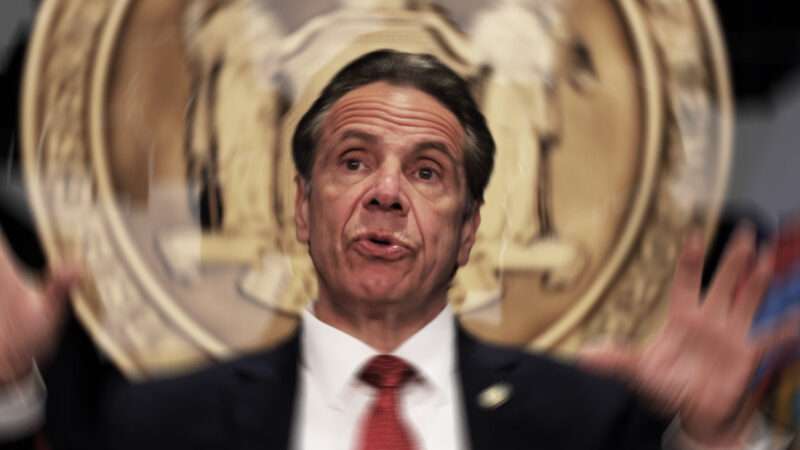
Since Monday’s mass shooting in Boulder, Colorado, gun control advocates have repeatedly noted that a state judge blocked enforcement of the city’s “assault weapon” ban 10 days before the attack. The implausible implication is that the ordinance, had it been allowed to take effect, might have prevented this crime.
“Boulder’s assault weapons ban, meant to stop mass shootings, was blocked 10 days before [the] grocery store attack,” The Washington Post noted on Tuesday. “Boulder’s Pain Is Deepened by a Lost Fight for Gun Control,” says the headline over a New York Times story published yesterday. “Less than two weeks” after Boulder County District Court Judge Andrew Hartman concluded that the local “assault weapon” ban conflicted with state law, Times reporters Mike Baker and Lucy Tompkins note, “a man armed with an assault-style weapon walked into a Boulder supermarket and opened fire, killing 10 people.”
The connection between those two events may seem superficially plausible. After all, at least one of the weapons that the gunman apparently used, a Ruger AR-556 pistol, would have been covered by Boulder’s ordinance.
Among other things, that ordinance prohibits the sale of “all semiautomatic center-fire pistols” that “have the capacity to accept a magazine other than in the pistol grip” or “have a protruding grip or other device to allow the weapon to be stabilized with the non-trigger hand.” The AR-556 pistol, which resembles a short-barreled rifle but does not legally qualify as one, has a stabilizing brace and a magazine port that is separate from the grip.
If the local “assault weapon” ban had been in effect, the perpetrator of this week’s attack would not have been legally allowed to buy that gun in Boulder. But he lived in Arvada, a city about half an hour’s drive from Boulder. The arrest warrant affidavit says the suspect purchased the pistol on March 16. It does not say where he bought it. Still, even if Boulder’s ordinance had not been blocked, he could have bought the gun pretty much anywhere else in Colorado.
The ordinance also prohibits possession of “assault weapons” in Boulder, except for previously owned firearms registered with the city’s police department. But it defies logic to suggest that a man bent on mass murder would have worried about that rule, even assuming that he knew about it.
Even if this man was for some reason keen to follow local firearm regulations as he set out to kill a bunch of strangers, he could have accomplished the same horrifying end with a gun that did not fit the ban’s criteria. Would it really have mattered that his pistol lacked a stabilizing brace or that its magazine was attached to the grip?
“AR-style weapons, first developed for battlefield use, have for years been a growing target of gun control advocates as such firearms repeatedly are deployed during mass shootings,” the Times says. But the perpetrators of such crimes are actually more likely to use ordinary handguns or long guns that don’t qualify as “assault weapons,” which have figured in several of the deadliest mass shootings.
As usual, the Times does not delve into the question of whether the arbitrary distinctions drawn by “assault weapon” bans make any sense. But Baker and Tompkins do concede that “the gunman could have purchased his weapon in another town” even if Boulder’s ban had taken effect. “A person wishing to buy an assault rifle would only need to leave city limits to legally purchase one,” they note.
Still, Baker and Tompkins say, “there has been a particularly keen sense of dismay and frustration in a city that tried, and failed, to prevent one of the most horrific kinds of gun violence.” They illustrate those emotions with a quote from Jill Adler Grano, the former city council member who introduced Boulder’s “assault weapon” ban. “My heart is broken,” she says. “We tried so hard to prevent this from happening, yet here we are.”
Again, the implication is that the ordinance could have “prevent[ed] this from happening,” even though that is plainly not true. In their 27th paragraph, Baker and Tompkins come close to acknowledging reality. “In some ways,” they say, “local ordinances such as the one Boulder passed are statements of political conviction as much as they are effective prohibitions on guns.” But that formulation still implies that such ordinances are in some unspecified ways effective at accomplishing the avowed goals of the politicians who support them.
The Times laments “the limitations of a patchwork, city-by-city approach to gun policy.” It notes that gun rights advocates also object to that approach, “arguing that local ordinances like Boulder’s are a nightmare for gun owners who must navigate varying restrictions from city to city.” That is why Colorado, like many states, has a law that preempts such local restrictions—the same law that Judge Hartman cited when he blocked Boulder’s ban.
“I can’t tell you how angering that is,” Rachel Friend, a current city council member and local gun control activist, tells the Times. “I’m supporting and advocating for us to appeal.”
Toward what end? “Our country has gone through mass shooting after mass shooting for decades now,” Grano says. “I have a son in high school, and it just felt like, ‘We have got to do something. If the federal government is not going to take action, we’re just going to keep talking around in circles.'”
In other words: We have got to do something, whether or not it’s likely to have any impact on mass shootings or on gun violence generally. That is the logic endorsed by national politicians such as President Joe Biden and Sen. Dianne Feinstein (D–Calif.) as well as local politicians like Grano and Friend. More should be required to pass any sort of legislation, let alone laws that impinge on a right guaranteed by the Constitution.
from Latest – Reason.com https://ift.tt/3cml0gV
via IFTTT




